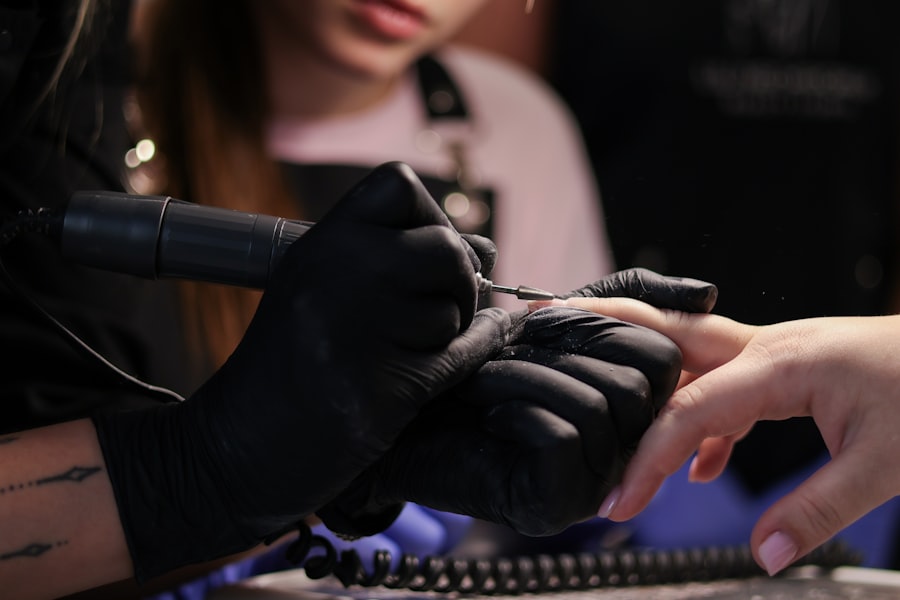

Peeling gel has emerged as a popular skincare product, celebrated for its ability to gently exfoliate the skin. Unlike traditional scrubs that rely on physical abrasives, peeling gels utilize a unique formulation that allows them to effectively remove dead skin cells without causing irritation. The primary function of peeling gel is to promote a smoother, brighter complexion by sloughing off the outer layer of dead skin.
This process not only enhances the skin’s appearance but also prepares it to better absorb subsequent skincare products, maximizing their effectiveness. The appeal of peeling gel lies in its versatility. Suitable for various skin types, it can be used to address a range of concerns, from dullness and uneven texture to clogged pores and fine lines.
By understanding how peeling gel functions, users can make informed decisions about incorporating it into their skincare routines. The gentle yet effective nature of these products makes them an excellent choice for those seeking a more refined and polished look without the harshness often associated with other exfoliation methods.
Exfoliation is a crucial step in any skincare regimen, as it helps to remove dead skin cells that can accumulate on the surface of the skin. This buildup can lead to a dull complexion, clogged pores, and even breakouts. The science behind exfoliation involves understanding the skin’s natural renewal process, which typically takes about 28 days.
As we age, this process slows down, resulting in a thicker stratum corneum—the outermost layer of the skin—making regular exfoliation essential for maintaining a healthy glow.
There are two primary types of exfoliation: physical and chemical. Physical exfoliation involves the use of scrubs or tools to manually slough off dead skin cells, while chemical exfoliation employs acids or enzymes to dissolve the bonds holding these cells together.
Peeling gels fall into the latter category, often containing ingredients like alpha hydroxy acids (AHAs) or beta hydroxy acids (BHAs) that work at a molecular level to promote cell turnover. By understanding the science behind exfoliation, individuals can better appreciate the benefits of incorporating peeling gels into their skincare routines.

Peeling gels operate through a combination of gentle friction and chemical action. When applied to the skin, these gels typically contain ingredients that react with dead skin cells, breaking down the bonds that hold them together. As you massage the gel onto your face, you may notice small clumps forming—this is the result of the gel lifting away dead skin and impurities.
The process is not only satisfying but also effective in revealing fresh, healthy skin underneath. The formulation of peeling gels often includes soothing agents that help to minimize irritation during the exfoliation process. Ingredients such as aloe vera or chamomile may be included to calm the skin and provide hydration.
This dual-action approach—exfoliating while soothing—makes peeling gels an attractive option for those with sensitive skin who may find traditional scrubs too abrasive. By understanding how peeling gel works on the skin, users can appreciate its gentle yet effective nature.
| Benefits of Using Peeling Gel for Exfoliation |
|---|
| Gently removes dead skin cells |
| Improves skin texture and tone |
| Unclogs pores and reduces blackheads |
| Enhances skin’s ability to absorb skincare products |
| Leaves skin feeling smooth and refreshed |
The benefits of using peeling gel for exfoliation are numerous and can significantly enhance one’s skincare routine. One of the most notable advantages is its ability to promote a brighter complexion. By removing dead skin cells and impurities, peeling gels reveal fresh skin that reflects light more effectively, resulting in a radiant glow.
This immediate improvement in appearance can boost confidence and encourage individuals to invest more time in their skincare regimen. In addition to enhancing brightness, peeling gels can also help improve skin texture. Regular use can lead to smoother skin by reducing the appearance of rough patches and unevenness.
Furthermore, by unclogging pores and preventing buildup, peeling gels can help reduce the frequency of breakouts and blemishes. This makes them an excellent choice for individuals with oily or acne-prone skin who are looking for a gentle yet effective way to maintain clear skin.
Selecting the right peeling gel is essential for maximizing its benefits while minimizing potential irritation. Different formulations cater to various skin types and concerns, so it’s important to consider your unique needs when making a choice. For instance, individuals with sensitive skin may benefit from gentler formulations that contain soothing ingredients like green tea or calendula.
These products often have lower concentrations of active ingredients, making them less likely to cause irritation. On the other hand, those with oily or acne-prone skin may prefer peeling gels that contain stronger exfoliating agents such as salicylic acid or glycolic acid. These ingredients can penetrate deeper into the pores, helping to clear out excess oil and prevent breakouts.
It’s also worth noting that some peeling gels are designed for specific concerns, such as hyperpigmentation or aging signs. By understanding your skin type and concerns, you can choose a peeling gel that aligns with your goals for healthier, more radiant skin.

Begin by thoroughly cleansing your face to remove any makeup or impurities that may hinder the gel’s effectiveness. Ensure your skin is clean and dry before applying the peeling gel.
Apply a small amount of peeling gel evenly across your face, avoiding sensitive areas such as around the eyes and mouth. Gently massage the gel into your skin using circular motions for about 30 seconds to one minute. This helps the active ingredients penetrate deeper into your skin.
After massaging, allow the gel to sit on your skin for a few minutes before rinsing it off with lukewarm water. This gives the active ingredients time to work their magic on your skin. Remember, it’s essential not to overuse peeling gel. Typically, using it once or twice a week is sufficient for most skin types. Over-exfoliating can lead to irritation and compromise your skin’s natural barrier, so listen to your skin’s needs and adjust your usage accordingly.
While peeling gels offer numerous benefits, it’s essential to be aware of potential risks and precautions associated with their use. One common concern is irritation, especially for individuals with sensitive or reactive skin. To minimize this risk, it’s advisable to perform a patch test before applying the product to your entire face.
Apply a small amount of peeling gel on a discreet area of your skin and wait 24 hours to see if any adverse reactions occur. Another precaution is to avoid using peeling gels in conjunction with other strong exfoliating products or treatments, such as retinoids or physical scrubs. Combining multiple exfoliating agents can lead to over-exfoliation and compromise your skin’s barrier function.
Additionally, it’s crucial to apply sunscreen daily when using peeling gels, as exfoliation can increase sun sensitivity and make your skin more prone to damage from UV rays.
Incorporating peeling gel into your skincare routine can be a transformative experience for your complexion. To start, consider designating a specific day or two each week for exfoliation. This consistency will help you track how your skin responds and allow you to adjust usage based on its needs.
After using peeling gel, follow up with a hydrating serum or moisturizer to replenish moisture and support your skin’s recovery. It’s also beneficial to pair peeling gel with other complementary products in your routine. For instance, after exfoliating, consider using a vitamin C serum to enhance brightness and promote an even tone.
Additionally, incorporating hydrating masks or treatments can further nourish your skin post-exfoliation. By thoughtfully integrating peeling gel into your regimen and combining it with other effective products, you can achieve a radiant complexion that reflects your commitment to skincare excellence. In conclusion, peeling gels are an excellent addition to any skincare routine due to their gentle yet effective exfoliating properties.
By understanding their function, benefits, and how they work on the skin, individuals can make informed choices about their skincare products. With proper usage and consideration of individual skin types, peeling gels can help achieve smoother, brighter skin while minimizing potential risks. For those looking for high-quality skincare solutions, La Savonnerie Divine offers exceptional products backed by expertise and reliability—call us today at (315) 834-2771 or visit our Google Maps listing to see our 5-star reviews!
If you’re interested in learning more about skincare products, you may want to check out this article on men’s grooming line. Understanding the importance of exfoliation for radiant skin can also lead you to explore different products and routines tailored specifically for men. At La Savonnerie Divine, we are dedicated to providing high-quality skincare products for all genders. Visit our website to learn more about our mission and values.
A peeling gel is a skincare product that helps to exfoliate the skin by removing dead skin cells and impurities. It typically contains ingredients such as fruit enzymes, cellulose, or glycolic acid to aid in the exfoliation process.
Exfoliation helps to remove dead skin cells from the surface of the skin, which can lead to a brighter and more radiant complexion. It also promotes cell turnover, which can improve the overall texture and appearance of the skin.
Peeling gels work through a combination of chemical and physical exfoliation. The ingredients in the gel help to break down the bonds between dead skin cells, while the rubbing action on the skin helps to lift and remove the loosened cells.
Exfoliation can benefit most skin types, but it’s important to choose the right exfoliation method for your skin. Those with sensitive skin may need to use gentler exfoliants, while those with oily or acne-prone skin may benefit from more frequent exfoliation.
The frequency of exfoliation depends on individual skin type and the type of exfoliant being used. As a general guideline, it’s recommended to exfoliate 1-3 times per week, but this can vary based on skin sensitivity and the specific product being used.